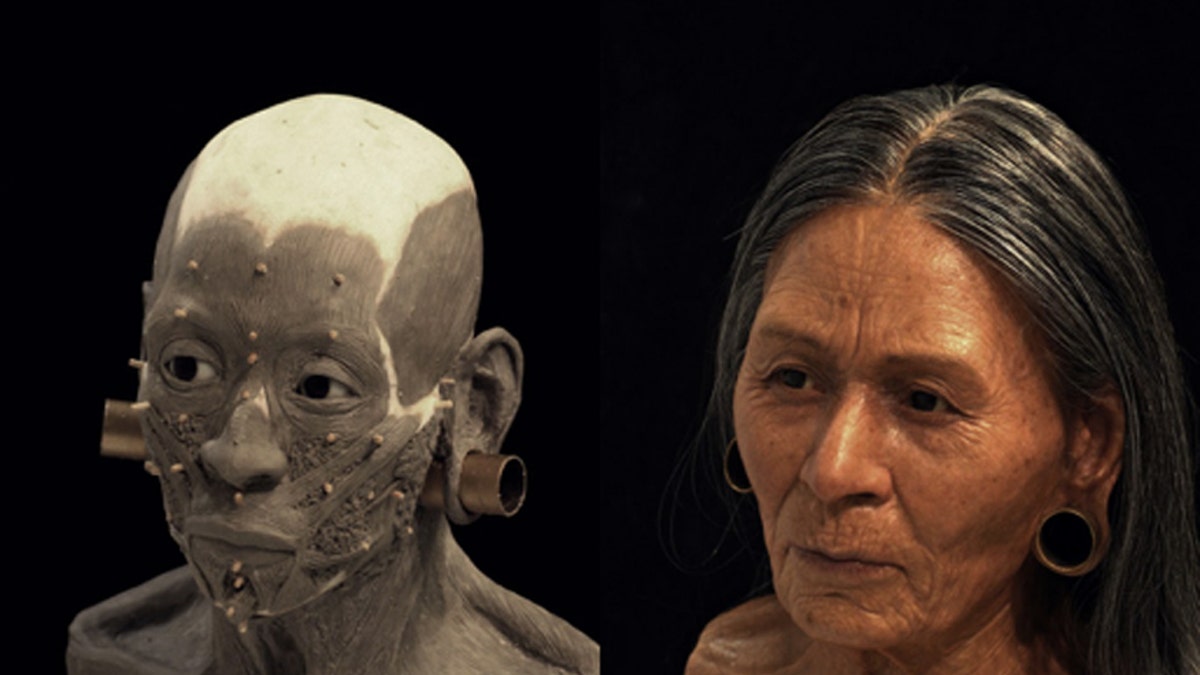
(Credit: National Geographic)
Archaeologists have learned a great deal about “the Huarmey Queen” in the five years since they discovered the tomb at El Castillo de Huarmey in Peru and found her body inside.
They’ve learned that she was from the pre-Incan Wari culture and she lived about 12 centuries ago.
They know that she lived past the age of 60, and that though she was just one of 58 noblewomen — including four queens or princesses — who were found in the remarkably untouched tomb, she was clearly special among them.
3.6-MILLION-YEAR OLD HUMAN SKELETON FOUND, SHOCKING SCIENTISTS
Her body, surrounded by jewelry, gold ear flares, a copper ceremonial ax, a silver goblet and weaving tools fashioned from gold, was found in a private chamber.
Her skeleton revealed that she had a strong upper body and spent most of life seated, indicating that she had been a weaver — a position of great renown among the Wari, who revered textiles more than gold and silver.
But they had no idea what she looked like.
Now they know that, too.
Early this year, National Geographic archaeologist Miłosz Giersz, who co-discovered the tomb with Peruvian archaeologist Roberto Pimentel Nita, asked Swedish archaeologist Oscar Nilsson if he could reconstruct the Huarmey Queen’s face.
TROVE OF STATUES DEPICTING LIONESS GODDESS DISCOVERED IN EGYPT
And Nilsson could. After creating a 3-D printed model of the woman’s skull, he used known datasets to estimate the thickness of the muscle and flesh atop the bone. Then, working with photographs of indigenous Andeans who live near the ancient tomb, he rebuilt her face by hand. He even used real hair from elderly Andean women to reconstruct her haircut.
It took him 220 hours, but it was worth the effort.
“I’ve worked with this for 20 years, and there are many fascinating projects — but this one was really something else,” Nilsson told National Geographic. “I just couldn’t say no to this project.” The finished reconstruction goes on public display Thursday at a new exhibit of Peruvian artifacts at the National Ethnographic Museum in Warsaw, Poland.




















